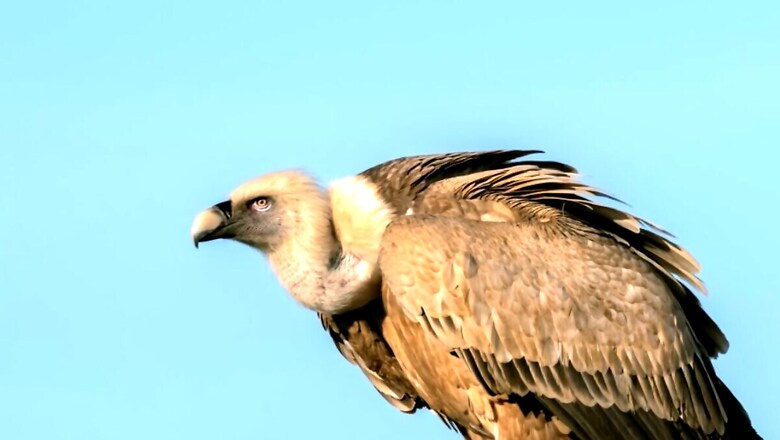
views
Vultures were once common throughout India, and they played an important role in preserving ecological balance by scavenging on livestock carcasses. However, a sharp decrease in their numbers over the last two decades has had unanticipated effects on both wildlife and human health.
According to the BBC, India’s vulture population of 50 million was nearly extinct in the mid-1990s, owing mostly to the extensive use of diclofenac, a nonsteroidal anti-inflammatory medicine (NSAID) to treat sick cattle. Vultures that consumed treated animal carcasses died from kidney failure.
Until 1993, the Swiss pharmaceutical company Ciba-Geigy (now Novartis) controlled its supply, but once the patent expired, generic production began. The cost of diclofenac was being reduced by Indian manufacturers of generic versions.
As a result, diclofenac was widely used in veterinary medicine starting in 1994. “Injuries, inflammations, and fevers in wounded or sick animals” was how farmers first used it, as per reports. Diclofenac was inexpensive, widely accessible, and effective in 15 minutes, so it made sense.
However, something unexpected happened. Indian vultures started dying in big numbers. The vulture population in India was nearly wiped out. Vultures became scarce in the early 2000s, having decreased from almost 40 million in the early 1990s. According to a new study by experts Eyal Frank and Anant Sudarshan, the extinction of vultures indirectly caused hundreds of thousands of human fatalities.
Frank and Sudarshan state in their study titled ‘The Social Costs of Keystone Species Collapse: Evidence From The Decline of Vultures in India’- “The functional extinction of vultures…increased human mortality by over 4 per cent.” It may not seem like a significant difference, but we’re talking about human lives here. If 100,000 people die in a country each year, a 4 per cent increase equates to 4,000 more deaths.
The report added that the authors estimated, between 2000 and 2005, the loss of vultures caused nearly 100,000 additional human deaths annually. This would have translated into an economic cost of $69 billion per year associated with premature deaths.
According to Frank and Sudarshan, a flock of vultures, or ‘committee’, can reduce a 385kg cow corpse to bones in 40 minutes. Dogs and rats scavenge, although they are less efficient. The authors of the study claimed that when the vulture population dwindled, ‘animal landfills’ appeared outside cities and villages.
Because it was expensive to bury or incinerate carcasses, they were dumped “on the outskirts of population centres across India”. Sometimes the carcasses were thrown in water, or fluids seeping from their rotting bodies drained into bodies of water, the study outlined.
Frank and Sudarshan conducted a thorough research of death rates both before and after vulture populations declined. They conducted their analysis separately on locations with large vulture populations and those without.
Between 1988 and 1993, locations unfavourable for vultures had somewhat higher death rates (1.2 additional deaths per 1,000 persons). According to the researchers, this could be because areas with fewer vultures, which are cooler and drier, had a problem with rotting carcasses, resulting in sickness and death.



















Comments
0 comment